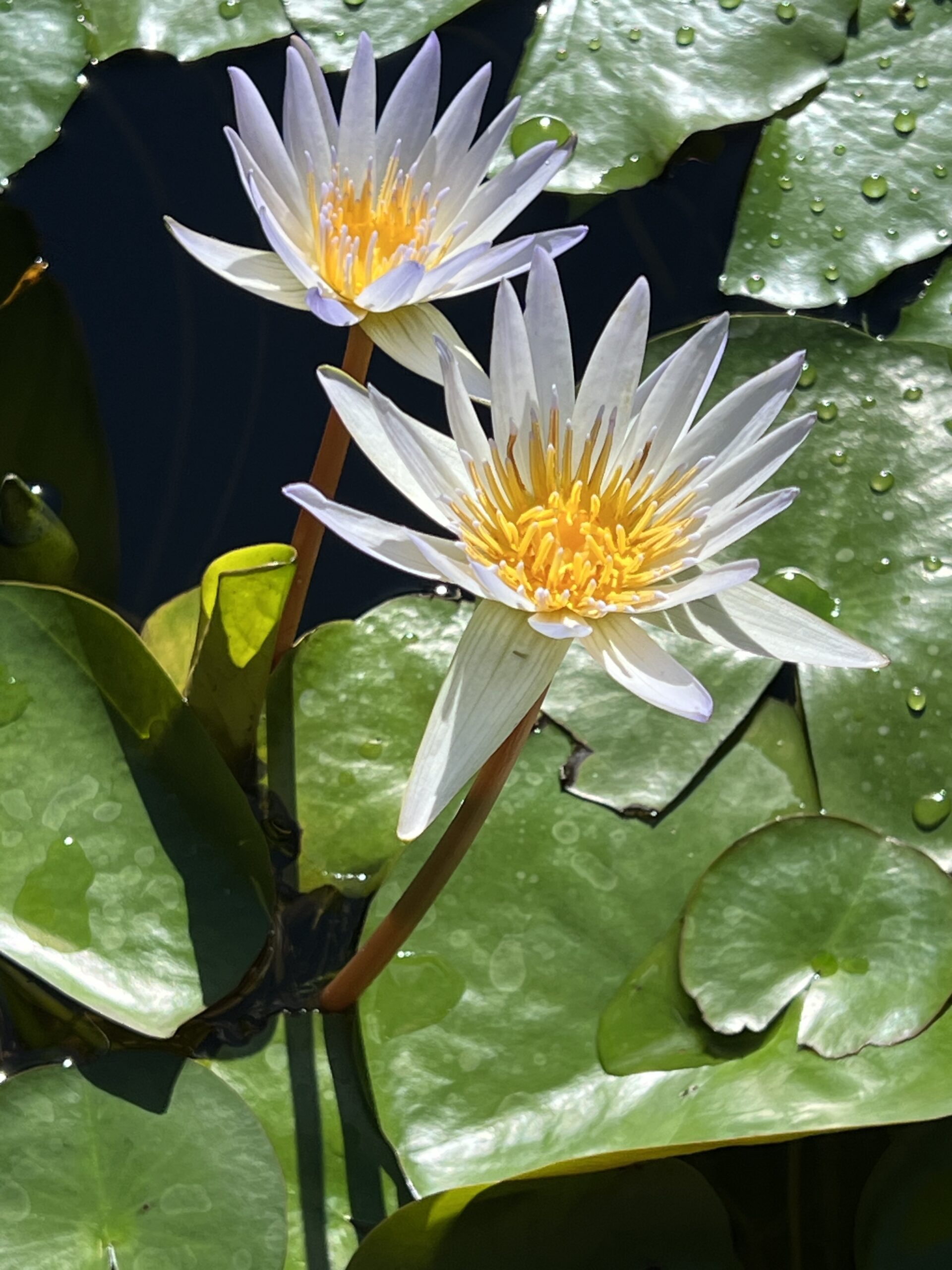“I love you for putting your hand into my heaped-up heart, and passing over all the foolish, weak things that you can’t help dimly seeing there, and for drawing out into the light all the beautiful belongings that no one else had looked quite far enough to find.” (”Ich liebe Dich” by Erich Fried)
There is, temporarily at least, an awesome spider web suspended across our livingroom window — glinting rainbows suspended on silvery threads that stir ever so slightly in the morning breeze. Not having seen its construction, I’m puzzled by two messy-looking segments directly above and below each other. Unlike the uncannily precise lines radiating around the rest of the web, one segment in particular has threads that crisscross each other like untidy shoe-laces. This, in turn, reminds me of last week’s blog that I concluded with: “Only Connect”.
Since writing that piece I had something of an epiphany. I had been thinking in terms of connections between people, and how one needs to weave a web of friendships that help withstand the “slings and arrows of outrageous fortune”. But subsequent readings and reflections revealed that the single most important connection I can have is with my innermost self. My inner guru, as it were.
Because I was experiencing a peculiar sense of disorientation and upheaval (read: pervasive anxiety) during a hectic trip to Vancouver, I undertook to center myself with readings on equanimity in Sharon Salzberg’s Lovingkindness. The following reminded me of navigating the city:
“Most of the time, our hearts and minds respond to the ten thousand joys and ten thousand sorrows by careening back and forth, over and over again, between elation and despair, the violent movement for and against what our experience is. Or we respond with denial in its many manifestations: indifference, repression, not noticing, muffled anxiety, feeling disconnected.” (italics mine)
Salzberg observes that this “violent movement for and against” our experience arises from a need to control the uncontrollable, and offers a consolation, of sorts, in the humble acceptance of “what is”:
“As we begin to understand this, we move from a mode of struggling to control what comes into our lives into a mode of simply wishing to truly connect with what is. This is a radical shift in worldview.”
My radical shift in world view was liberating. While in the city I witnessed so many instances of suffering that, at first, I couldn’t wait to escape to the solitude of the mountains. But my inner guru realized that, rather than an escape, what I needed was a way to embrace events unfolding around me, unflinchingly, as in Emily Bronte’s “No coward soul is mine.”
No coward soul herself, Salzberg continues: “When we become willing to experience everything, the confidence and certainty we once sought by denying change we can find by embracing it. We learn to relate to life fully, including the insecurity.”
I was reminded of one astonishing way to embrace insecurity when I re-joined an eclectic group of ocean-swimmers dubbed the “Jericho Dolphins”, for their Saturday morning swim. Water temperature 14C degrees. The only criteria for inclusion in the group, as far as I could tell, was the willingness (some would say foolhardiness) to expose oneself to the elements with a daily — as in year-round — ocean swim. While I wore an entirely inadequate 1.5mm wetsuit top, (I left my flippers at home, deeming them “uncool”) I observed the only concession a few swimmers made for the frigid temperature was some neoprene bathing caps that I sincerely wished I had on hand.
But these are not fool-hardy people. Very accomplished in their various fields, they bring not only a wealth of education and training, (in Cold Water Immersion, among other things) but something equally valuable to an ordinary layperson: the compassion, empathy, sympathetic joy and equanimity that Fried is describing in his poem. Each in their own time and way has shared their hopes and disappointments, challenges and victories, joys and sorrows, and all have found healing in that vast, impartial ocean. And in the support and camaraderie of an exceptional pod of “dolphins”.
On this particular morning, I too experienced that healing power. With one patient swimmer holding back to accompany me, I fell far behind the others. Through blurry goggles I could pick out their fluorescent Swim Buddies (inflatable buoys that alert boats etc. to their presence) as they rounded a small barge in the near distance. My heart sank when they looped back towards me, only to head for another ’goalpost’ in the form of a blue boat, with talk of further markers beyond that. An inner voice warned me that I was figuratively (if not soon literally) in over my head, so I called out to the others that I needed to turn back for shore. The ocean swallowed up my voice, so I hesitated in a limbo of not knowing which way to go. Then, as in an actual pod of dolphins, a swimmer looped back to check on me. Giving me her Swim Buddy, she accompanied me right to the beach, then waited (like Flipper, I imagine) until I’d walked steadily back to the club, and then swam effortlessly off to join the others.
Later, in the hot tub and locker room, there were friendly ’debriefings’, including the messy bits of our lives, like the wonky segments of the spider web. And some good-natured teasing, about my “accessorizing” with a half-wetsuit, among other things. Even some tough love: “it’ll be what it’ll be” one swimmer sagely, but kindly, commented when I’d shared a particular problem.
In sum, I went home with a renewed sense of capability, of having done the thing, as Eleanor Roosevelt would say, that I thought I couldn’t do. Along with renewed determination to embrace the changes, unknowns and opportunities ahead of me.
And equally determined to get myself a fancy 4/3mm wetsuit and Swim Buddy before I ever take that particular plunge again!
